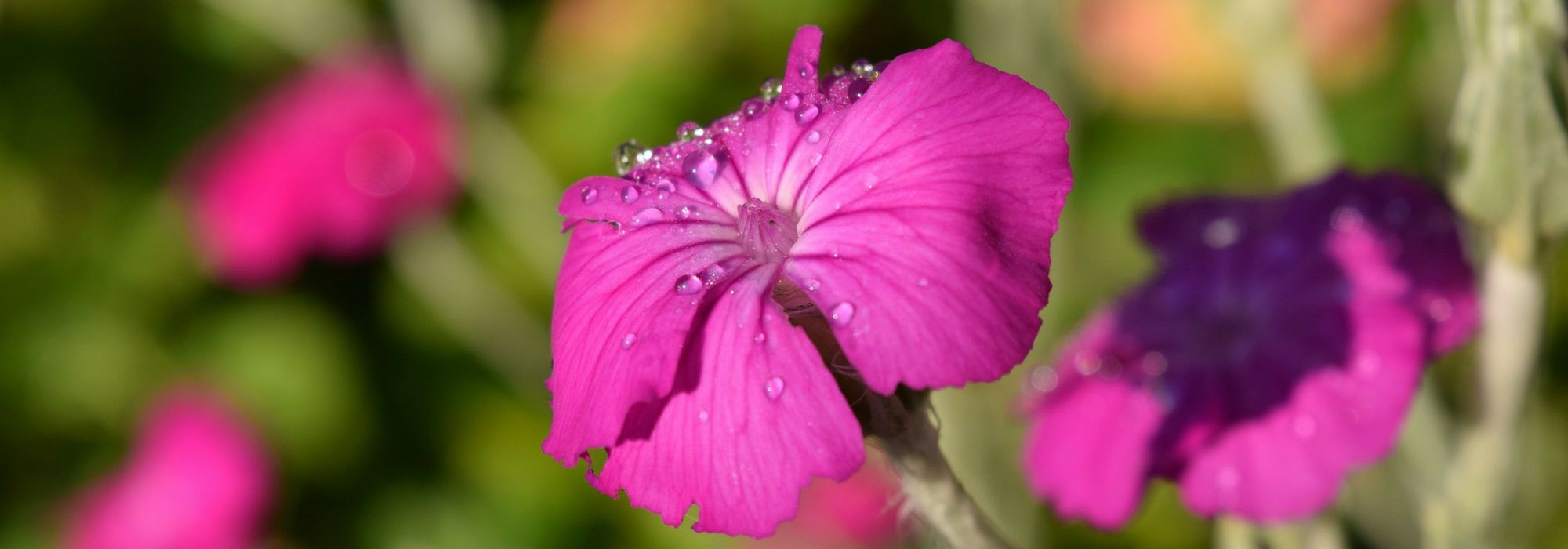
Lychnis, campion: planting, growing and care
Contents
Lychnis in a nutshell
- Lychnis offers a generous summer flowering in purple, pink, or white.
- A plant for dry soils, Garden Campion is ideal for rockeries or stony ground.
- Easy to grow, lychnis require no maintenance and self-seed spontaneously.
- Their wild character makes them the stars of naturalistic gardens.
- Highly melliferous, they attract numerous pollinators to the garden, promoting biodiversity.
A word from our expert
Lychnis captivates with its grey-silver foliage with a velvety appearance and its flowering with a very wild character. Whether in borders, meadows, or mass plantings, these lovely perennials, which sometimes have a very short lifespan, fit in everywhere, especially in natural gardens.
Their delicate flowering, borne on generally downy stems, offers beautiful shades of pink: from bright magenta to very soft pale pink. Other varieties display a brilliant white, such as Lychnis flos-cuculi ‘White Robin’, a charming wildflower with a tousled look and finely cut petals, or combine charms like Lychnis coronaria ‘Angel’s Blush’, which showcases an elegant gradient of soft pink at the centre, fading to white at the edges.
The garden campion (Lychnis coronaria), the star of the genus, grows and thrives spontaneously in poor, dry soils and withstands limestone perfectly, making it the queen of dry gardens. Its summer flowering is stunning in mass plantings, borders, or rockeries, but it also settles easily in the most inhospitable corners of the garden.
While the species L. flos-jovis also tolerates drought very well, other lychnis show a clear preference for fresh soils, such as Lychnis viscaria with its lovely tiered and frilly flowers, or even moist conditions for Lychnis chalcedonica and flos-cuculi. The latter makes a wonderful waterside plant.
Beyond their differing preferences for soil freshness, lychnis all offer great ease of cultivation and high hardiness (at least -15°C), allowing all gardeners to adopt them, regardless of their region’s climate. Once established, they generously self-seed, sometimes even in the short grass meadow, and require no maintenance. Lychnis are thus the friend of all gardeners, from the most novice to the most hurried!
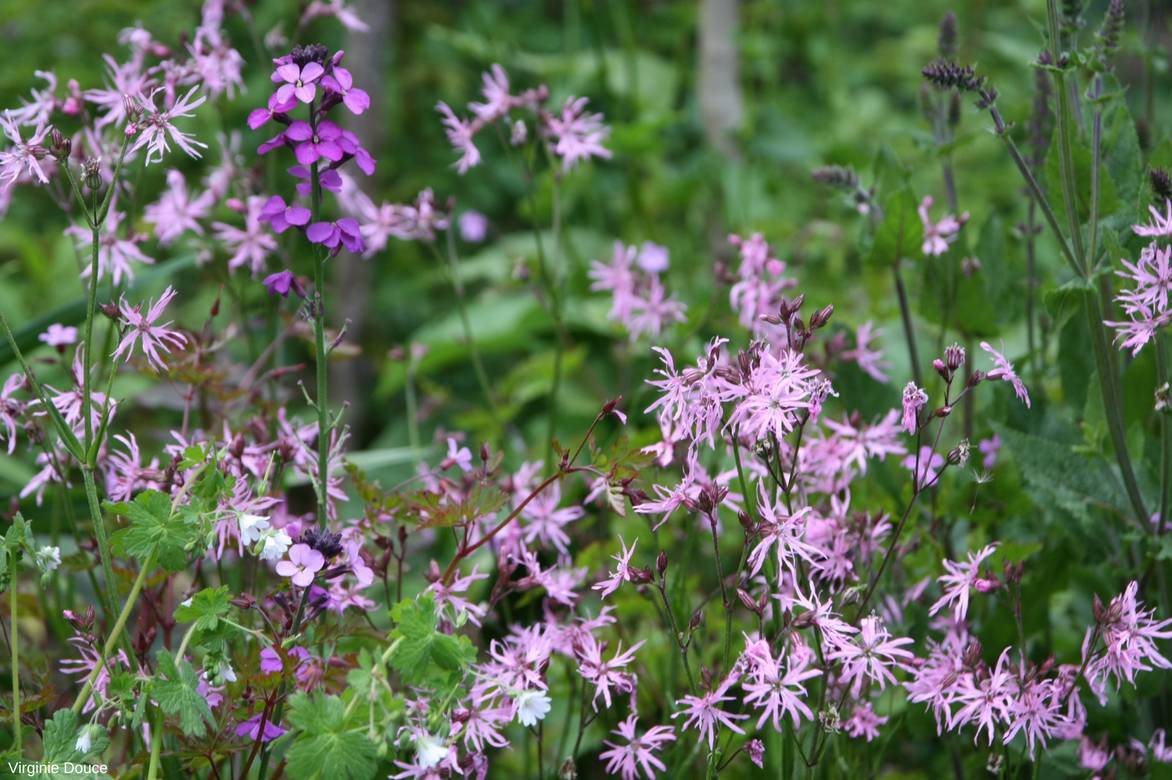
Lychnis are perfect in natural gardens.
Description and Botany
Botanical data
- Latin name Lychnis
- Family Caryophyllaceae
- Common name Lychnis, campion
- Flowering Summer
- Height 40 to 90 cm
- Exposure Sun or partial shade
- Soil type poor, dry or stony for some, fertile and cool for others
- Hardiness -15°C and above
Lychnis are lovely perennials with a wild and rustic character, belonging to the family Caryophyllaceae, like pinks.
The garden campion (Lychnis coronaria), undoubtedly the best-known of the genus, thrives spontaneously in uncultivated and stony soils of southern Europe and western Asia. Perfectly adapted to our climates, this lychnis tolerates a wide variety of soils, even the most challenging, as long as they are not too acidic or clayey. Although perennial, it is often grown as a biennial due to its very short lifespan. However, it self-seeds very easily, renewing itself without assistance as long as the terrain suits it.
Its lanceolate and downy foliage, with a very decorative silver-green colour, forms a basal rosette about 15 cm high, giving it a ramified and bushy habit of approximately 40 cm wide. The flower spikes, which reach 40-80 cm high depending on the soil type, bear small flowers 4 to 5 cm in diameter, forming a flat corolla made up of 5 silky petals. The highly melliferous flowering occurs in summer, offering a multitude of single purple flowers (L. coronaria), pink and double (‘Gardener’s World’), or pure white (‘Alba’). Very hardy, Lychnis coronaria withstands cold down to -15°C, but may lose its foliage beyond that.
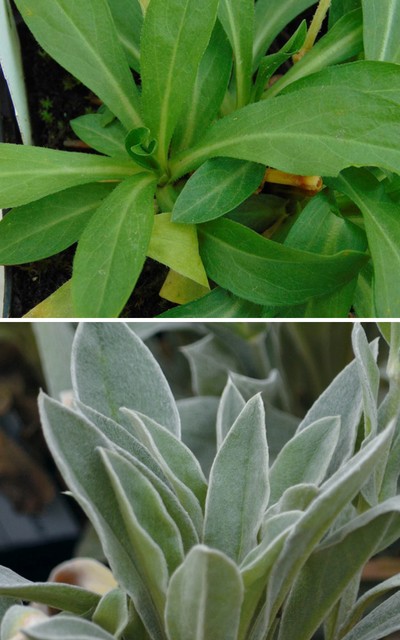
Foliage: green and smooth for Lychnis chalcedonia, grey and downy for Lychnis coronaria.
Easily cultivated, Lychnis flos-jovis, known as Jupiter’s Flower, also features downy foliage, but is deciduous, while its pink-purple (sometimes red, more rarely white) flowering consists of smaller flowers (2.5 cm in diameter) with more notched petals. More robust than Lychnis coronaria, it also has a longer lifespan and even better hardiness (-25°C). This perennial originates from Central Europe, where it flourishes on the dry slopes of mountain ranges. It can be found naturally in the Alps, as well as in Haute-Loire, Aude, and Ariège.
Somewhat less drought-tolerant, the species Lychnis viscaria hails from Europe and Asia Minor, like its cousin Lychnis coronaria. Also hardy down to -15°C, it is distinguished by its bright pink flowers with tiered cymes and very crumpled petals, along with its semi-evergreen foliage of beautiful bronze-green. Smaller in size (45 cm in all directions), varieties like ‘Spendens’ or ‘Plena’ offer a generous flowering in May-June, consisting of small flat flowers 2 cm in diameter borne on thin, sticky stems.
In heavy, clayey soil, prefer the species Lychnis chalcedonica and Lychnis flos-cuculi. The former, native to Eastern Europe, Central and Eastern Russia (Kazakhstan, Mongolia), and Northwestern China, is a beautiful, very hardy perennial (-15°C) that thrives in constantly moist soil and does not tolerate drought well. It has an upright and less bushy habit, reaching up to 90 cm, with very bright light green foliage. Its summer flowering (from June to August) consists of a multitude of small flowers 2 cm in diameter in very bright red or pure white for the variety ‘Alba’. The original shape of its five petals, slightly divided at the top, gives it the name Maltese or Jerusalem Cross.
Lychnis flos-cuculi also enjoys cool to moist soils, making it an excellent waterside plant, and shows very good hardiness (-15°C and above). It thrives spontaneously in the marshes and turf moors of Europe, as well as in meadows up to 2,500 m in altitude. This tall perennial presents a decidedly wild appearance with its abundant flowering in light egret-like clusters, borne on purple stems 50 to 75 cm high.
Whatever the species, Lychnis has many advantages, including excellent hardiness that allows it to thrive throughout France. Very resistant to diseases and pests, this perennial is easy to cultivate and requires no maintenance. It self-seeds spontaneously without becoming invasive. Its slightly wild charm makes it a perfect candidate for naturalistic gardens, whether dry and poor for the garden campion or cool and moist for Lychnis chalcedonica and flos-cuculi.

Some flowers of Lychnis: L. flos-cuculi, L. coronaria ‘Alba’, L. viscaria ‘Plena’, L. flos-cuculi ‘White Robin’, L. coronaria.
Species and varieties of lychnis
While all lychnis are very easy to grow and adapt to any ordinary soil, some species are more drought-resistant, such as the garden campion (Lychnis coronaria) or Lychnis flos-jovis.
Other species of lychnis, originating from montane regions, prefer more fertile and cool soils, even moist ones.
All are hardy down to -15°C and even beyond, allowing them to be grown throughout France.
Garden campion (Lychnis coronaria)
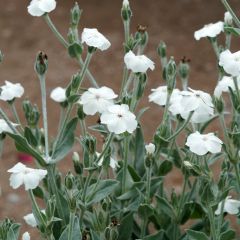
Lychnis coronaria Alba
- Flowering time July to October
- Height at maturity 80 cm
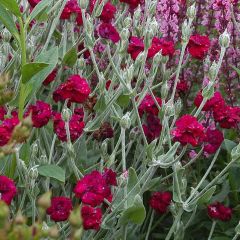
Lychnis coronaria Gardeners World
- Flowering time July to October
- Height at maturity 80 cm
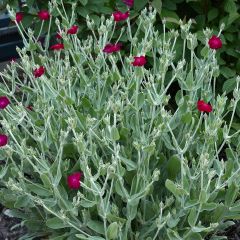
Lychnis coronaria Atrosanguinea
- Flowering time July to September
- Height at maturity 70 cm
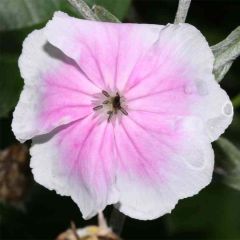
Lychnis coronaria Oculata
- Flowering time July to October
- Height at maturity 80 cm
Other lychnis for dry soil
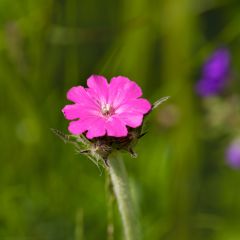
Lychnis flos-jovis
- Flowering time July to September
- Height at maturity 40 cm
Lychnis for cool to moist soil

Lychnis viscaria Splendens
- Flowering time June, July
- Height at maturity 50 cm
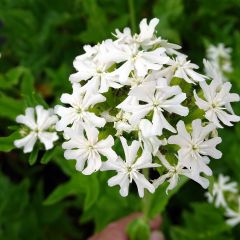
Lychnis chalcedonica Alba
- Flowering time July to September
- Height at maturity 80 cm
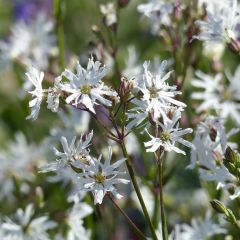
Lychnis flos-cuculi White Robin
- Flowering time June to August
- Height at maturity 45 cm
Discover other Lychnis
View all →Available in 0 sizes
Available in 2 sizes
Available in 0 sizes
Available in 2 sizes
Available in 1 sizes
Available in 1 sizes
Available in 2 sizes
Available in 1 sizes
Available in 2 sizes
Available in 2 sizes
Planting Lychnis
Where to plant?
Unfussy and very hardy, lychnis adapt to all our climates, with a preference for full sun, although they can tolerate light partial shade, especially in hot, dry climates like the Mediterranean. An ordinary soil is often sufficient for their happiness, although their differences in origin lead to certain cultural preferences.
Thus, in very poor, dry, and stony soil, prefer the garden catchfly (Lychnis coronaria) and Lychnis flos-jovis. Naturally found in uncultivated and rocky lands, where they self-seed spontaneously, these two species cope perfectly with drought.
The Lychnis viscaria can also adapt to the same type of soil, provided it is not too calcareous, but it tolerates drought less well, preferring soils that remain cool.
In regions with clayey, heavy, and wet soils, your only option will be to welcome these lychnis on the slope of a bank or in a rock garden… or to opt for Lychnis chalcedonica or L. flos-cuculi! Unlike other species, these beautiful perennials indeed prefer rich, cool to moist soils, and quickly suffer from a lack of water. They will benefit from being placed in full sun in the northern regions of France, but will prefer partial shade elsewhere.
While all Lychnis thrive in borders or mass plantings, particularly in naturalistic gardens, their wild character is, however, not well suited to pot cultivation.
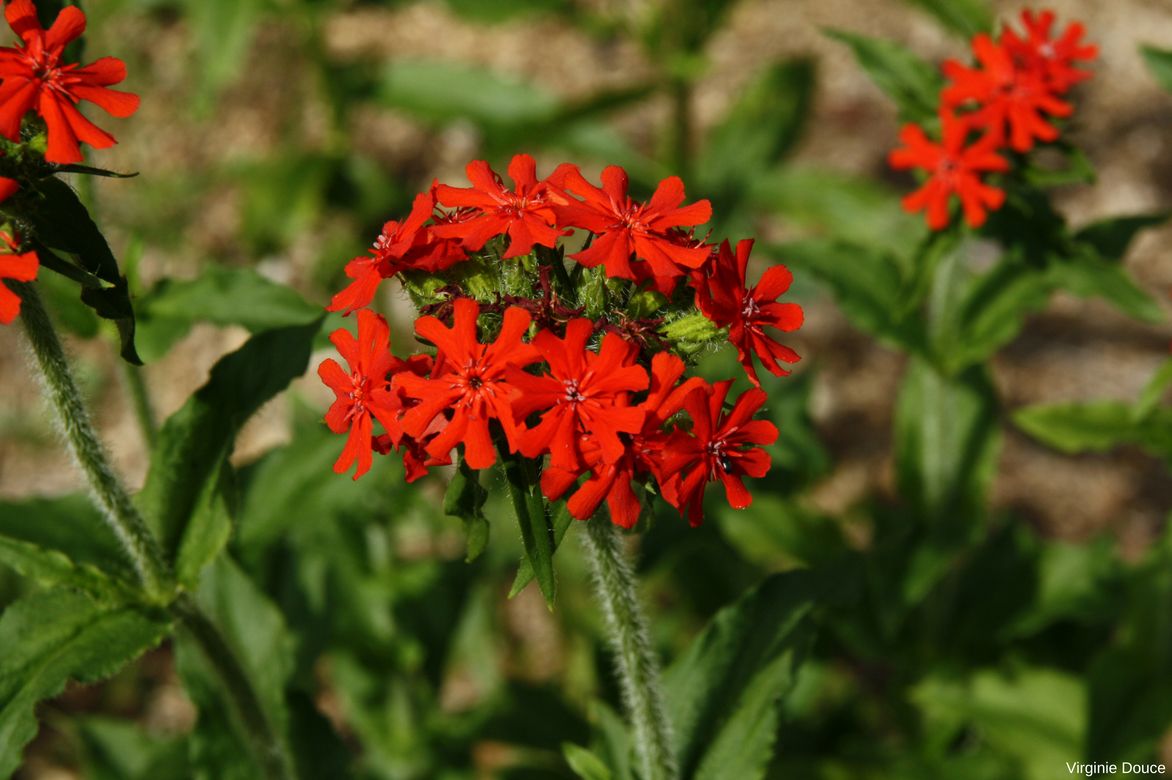
Bright red flowers of a Lychnis chalcedonia.
When to plant?
All species of Lychnis are planted in spring (March-April) or autumn (September-October). Prefer spring planting in northern regions, and autumn elsewhere.
How to plant?
Lychnis are very easy perennials to plant:
- Soak the buckets for a few minutes in water.
- Dig a planting hole about three times the size of the root ball.
- To encourage the establishment and growth of the more demanding species L. flos-cuculi and L. chalcedonica, add some compost.
- Gently remove from the pot and position your plant.
- Backfill the hole, taking care to leave the collar level with the soil surface.
- Water generously.
For a beautiful effect, aim for a density of 5 to 6 plants per m², or one plant every 20-25 cm.
Care
In good growing conditions, Lychnis require very little care and thus bring joy to all gardeners, even beginners.
The garden campion (Lychnis coronaria) and Lychnis flos-jovis tolerate drought very well. Once established, they no longer need watering and will self-seed spontaneously in dry, stony soil, renewing themselves effortlessly. During hot, dry summers, ensure that the soil does not dry out too much at the feet of your Lychnis viscaria, even though they tolerate temporary drought. Finally, monitor the watering of Lychnis chalcedonica and flos-cuculi, which do not tolerate even slight drought well, and apply mulch to retain moisture.
Whatever the species, remove faded flowers as they appear and cut back dry parts to encourage new growth and a resurgence of flowers.
Cut back the clump to 20 cm above the ground as soon as it is no longer decorative a few weeks after flowering to allow for spontaneous sowing the following year, thus perpetuating the plant, which may have a short lifespan (2 to 5 years for some varieties).
More demanding than other species, Lychnis chalcedonica and flos-cuculi will benefit from a supply of compost and ground horn powder at the beginning of spring. It may also be helpful to stake L. chalcedonica from late spring onwards to prevent its stems from bending under the weight of the flowers.
Watch out for slugs during the growth of young leaves, particularly for the chalcedonica and flos-cuculi species. In case of a real invasion, use Ferramol slug bait, a very effective and environmentally friendly option that is safe for your health and that of other animals.
Propagation of lychnis
The majority of Lychnis self-seed spontaneously in poor, stony soil, or conversely in fertile, cool soil for the species chalcedonica and flos-cuculi. Sowing remains the simplest method of propagation. Be careful, the flower colour of plants from natural sowing may sometimes differ from that of the mother plant!
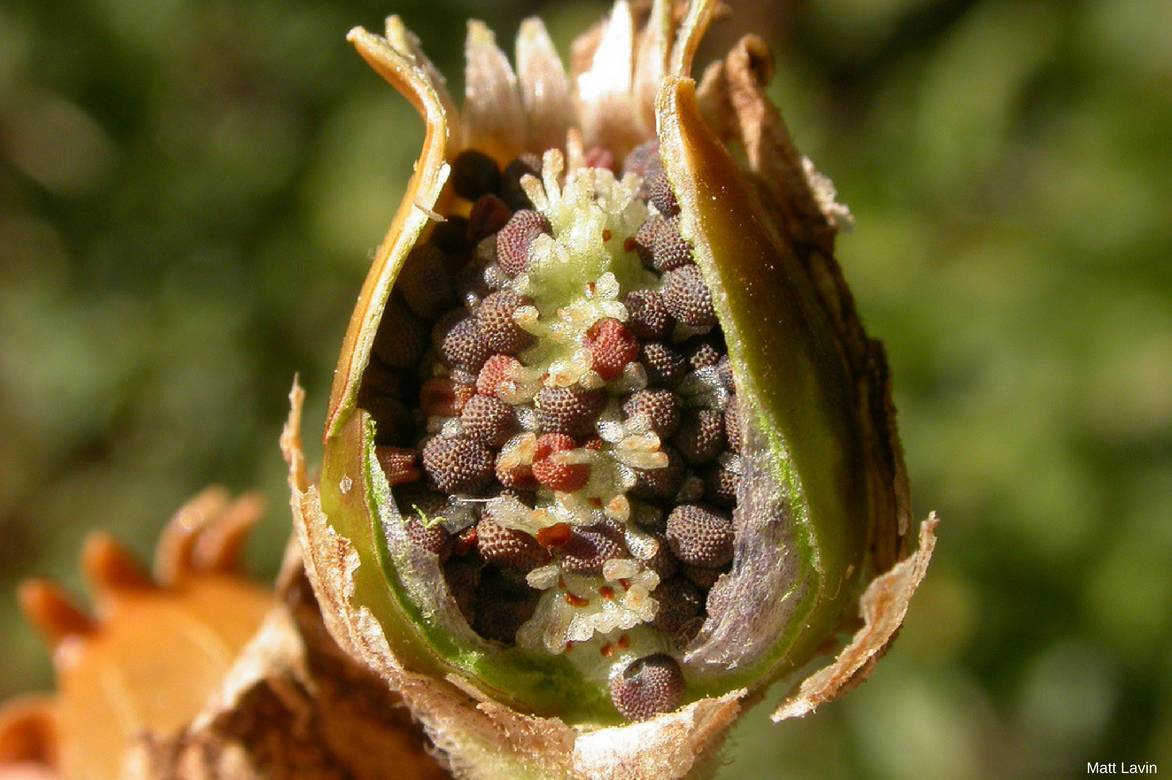
Seed capsule of a Lychnis coronaria.
Easy to carry out, sowing Lychnis can be done in summer, in a seed tray and under well-ventilated cover:
- Sow your seeds in a mixture of potting soil and vermiculite.
- Cover them lightly and press down slightly.
- Keep the seed tray moist and well-exposed until germination, 2 to 3 weeks later.
- In mild climates, such as Mediterranean, you can plant your young plants directly in the ground from September to October.
- Elsewhere, transplant the seedlings into individual buckets when they reach 3 to 5 cm tall and keep them under cover during winter to protect them from frost. Wait until March-April to plant them in the garden.
- In both cases, monitor watering to maintain a certain freshness of the substrate.
Even easier, sowing Lychnis can be done at the end of summer, in September, directly in the ground in a well-sunny location:
- Sow by scattering in well-tilled soil.
- Water with a very fine spray and keep the soil moist.
- Ethin out as needed in spring, keeping 3 plants per m² for garden catchfly (Lychnis coronaria), and between 5 and 7 for other species.
Beware of gastropods, always eager for tender young shoots!
Associating
Rockery, bank, low wall, the garden catchfly is the queen of naturalistic gardens! It works wonders in giving a wild air to a flowerbed or border and filling the gaps between other plants. Don’t hesitate to plant it in groups for a more compact effect, and alternate the magenta pink varieties with the splendid white form Lychnis coronaria ‘Alba’.
The velvety silver foliage of lychnis also makes a statement in an English cottage garden, enhancing the base of old roses and thus elevating their flowering. The very romantic Lychnis coronaria ‘Angel’s Blush’ with its soft pink petals edged in white is, for example, an excellent choice.
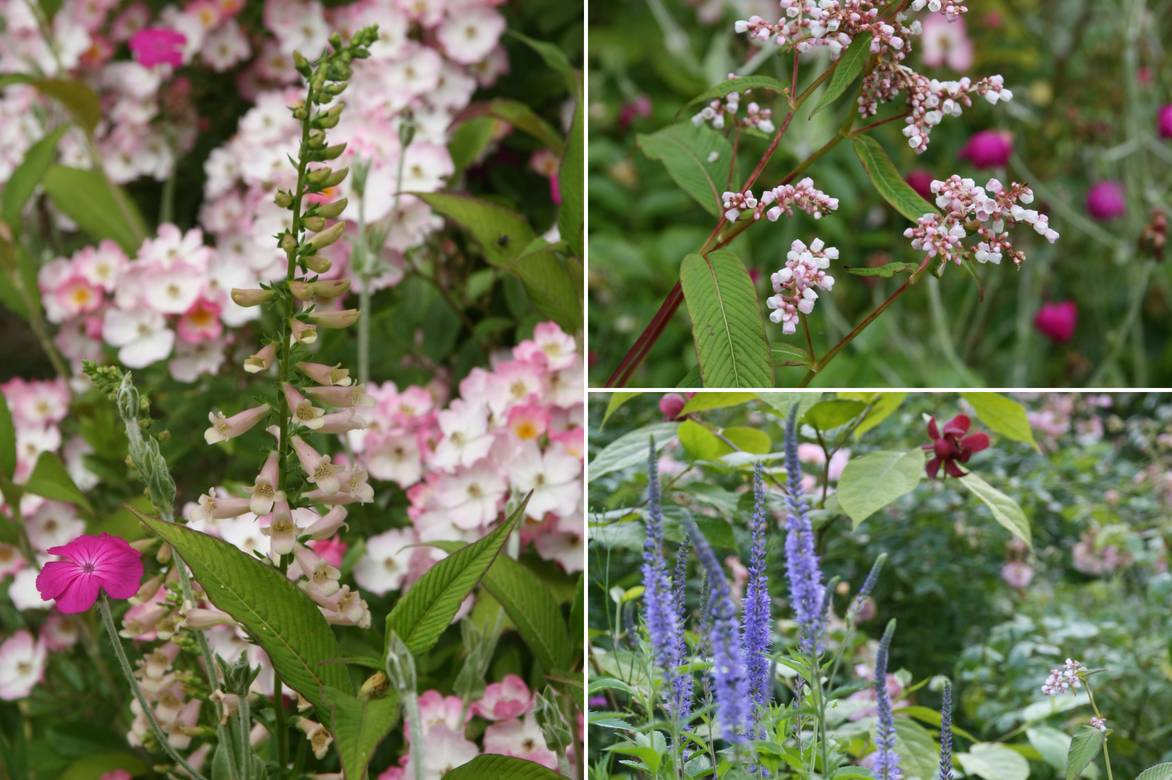
An example of association: rose ‘Ballerina’, Lychnis coronaria, Digitalis ‘Glory of Roundway’, Persicaria campanulata, Veronica longifolia ‘Blauriesin’ (Photos Virginie Douce).
To flower the edges of a path and give it relief, take inspiration from the central path of Monet’s Garden, animated by tall loosestrifes framed by bright purple catchflies, or opt for an elegant alternation of colours by combining the proudly upright violet of agastaches or Veronica longifolia with the purity of a white lychnis. Also consider anthemis or even cosmos for a delightfully rustic effect.
In a wet meadow or by the riverbank, don’t hesitate to adopt the superb Lychnis flos-cucculi or cuckoo flower lychnis, with its very wild, tousled look. Pair it, for example, with the elegantly flowering irises or columbines.
→ More association ideas with Lychnis in our advice sheet
Useful resources
Discover our wide range of lychnis!
Let yourself be inspired by our article on the naturalist garden.
Our advice sheet: How to choose a lychnis?
Frequently asked questions
-
My sowing of Lychnis did not produce young plants with white flowers. They are, however, from Lychnis coronaria ‘Alba’.
It is quite normal; sowing varieties of poppies does not always produce young plants with the same characteristics as the variety from which they originated.
- Subscribe!
- Contents
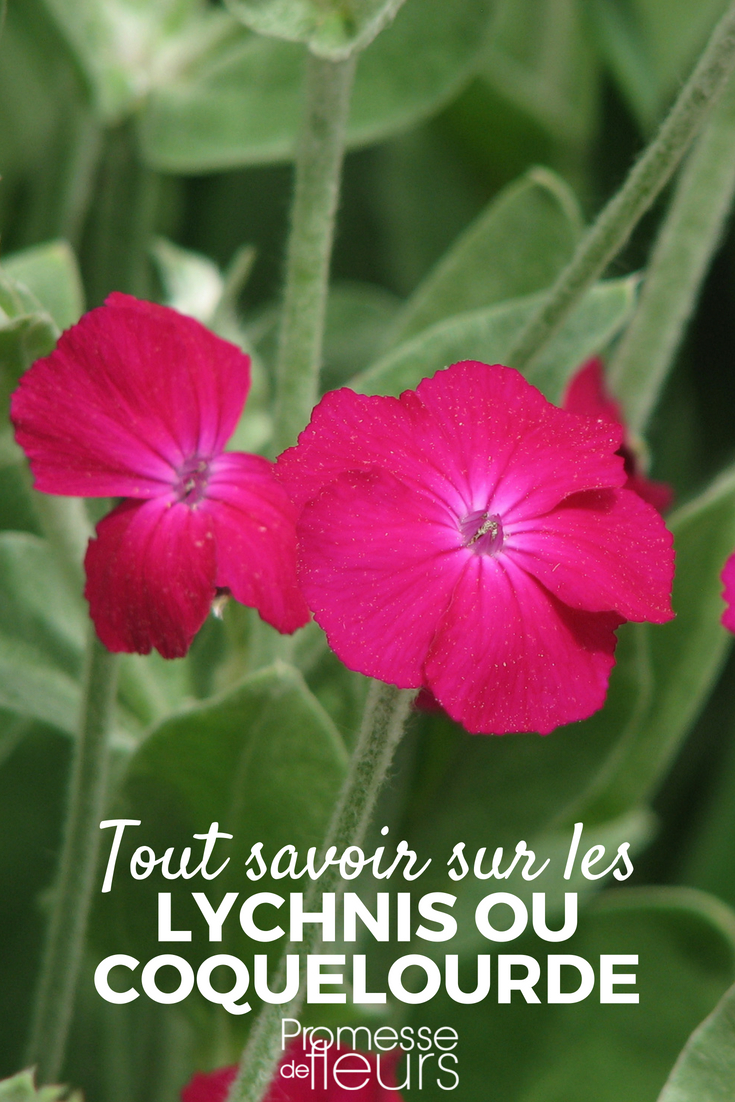
































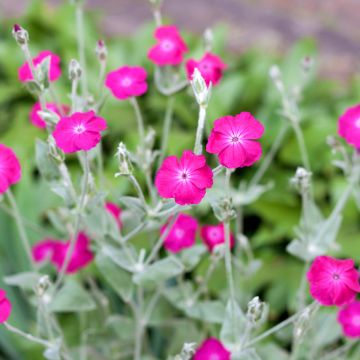

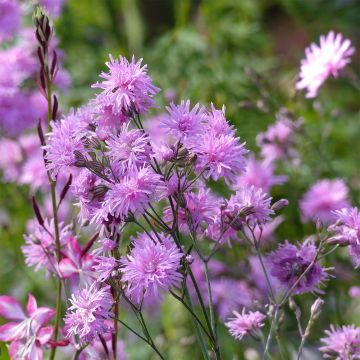

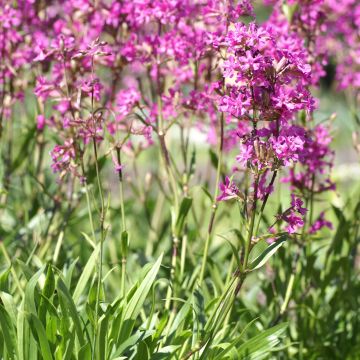

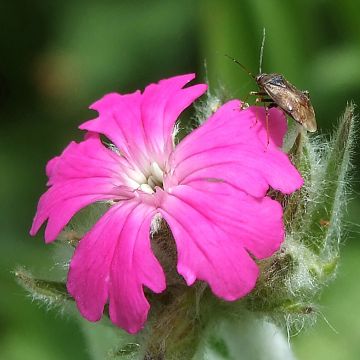

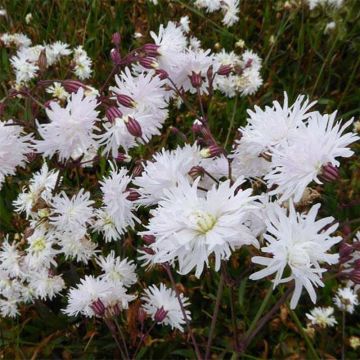
Comments